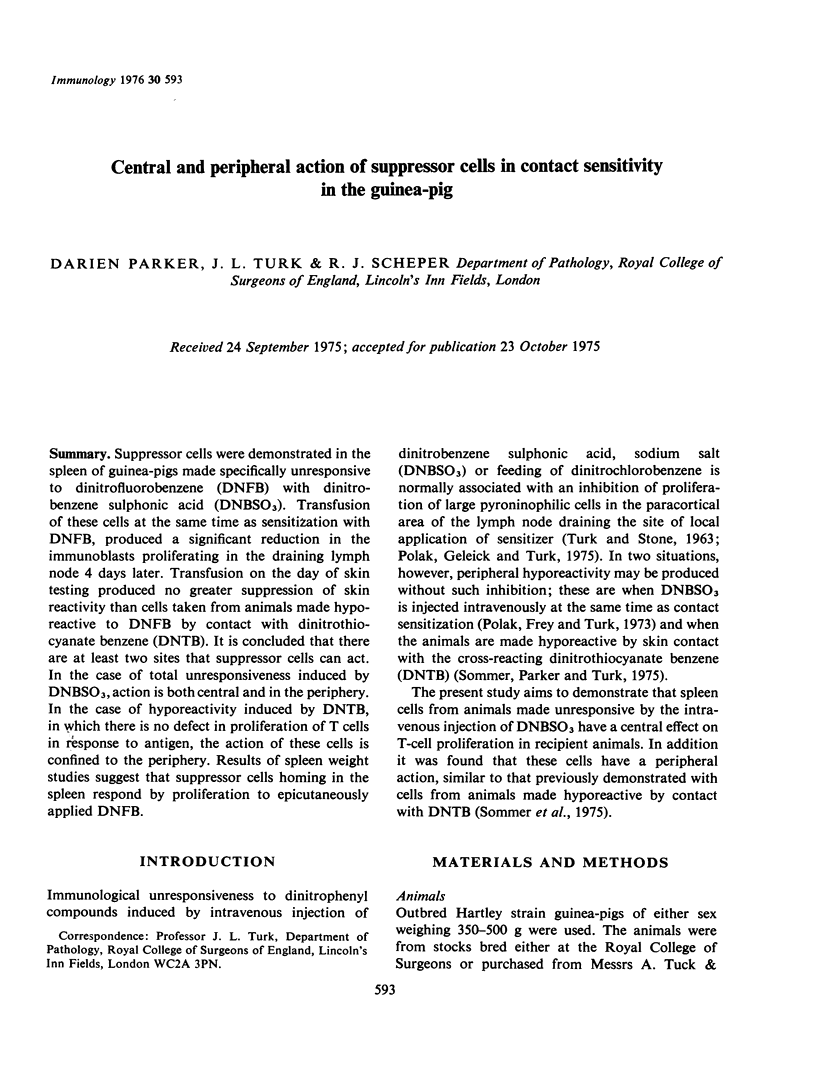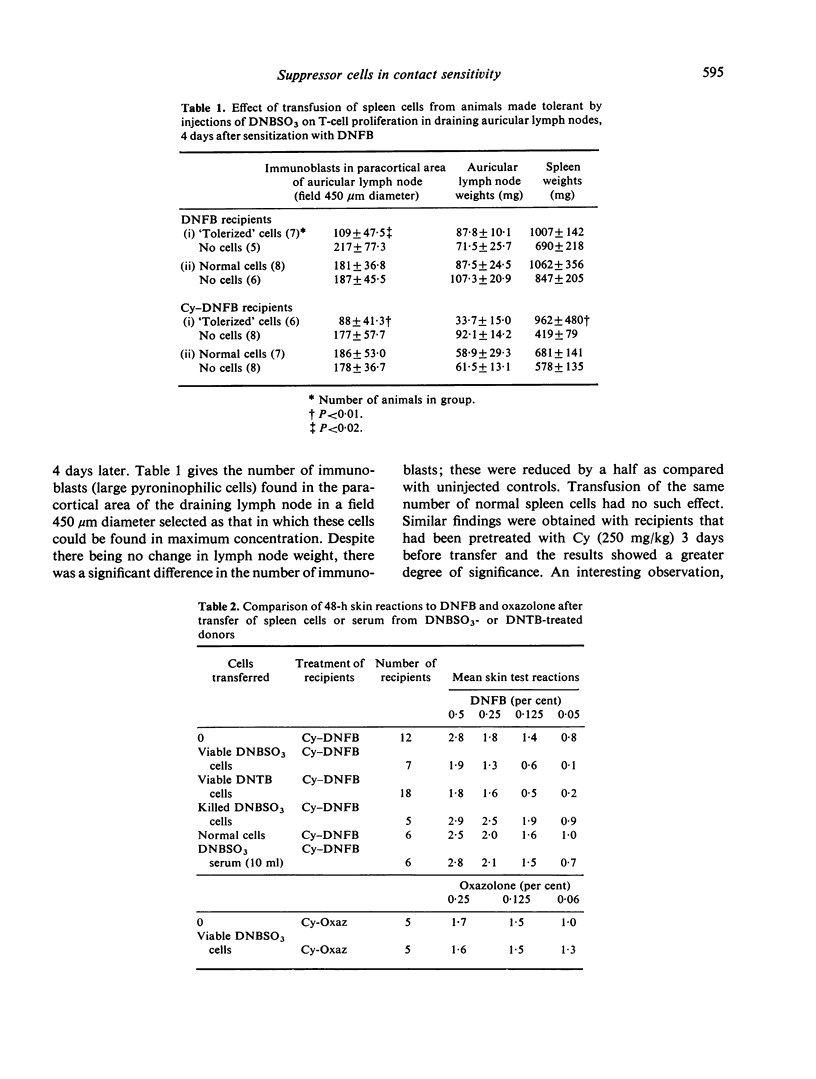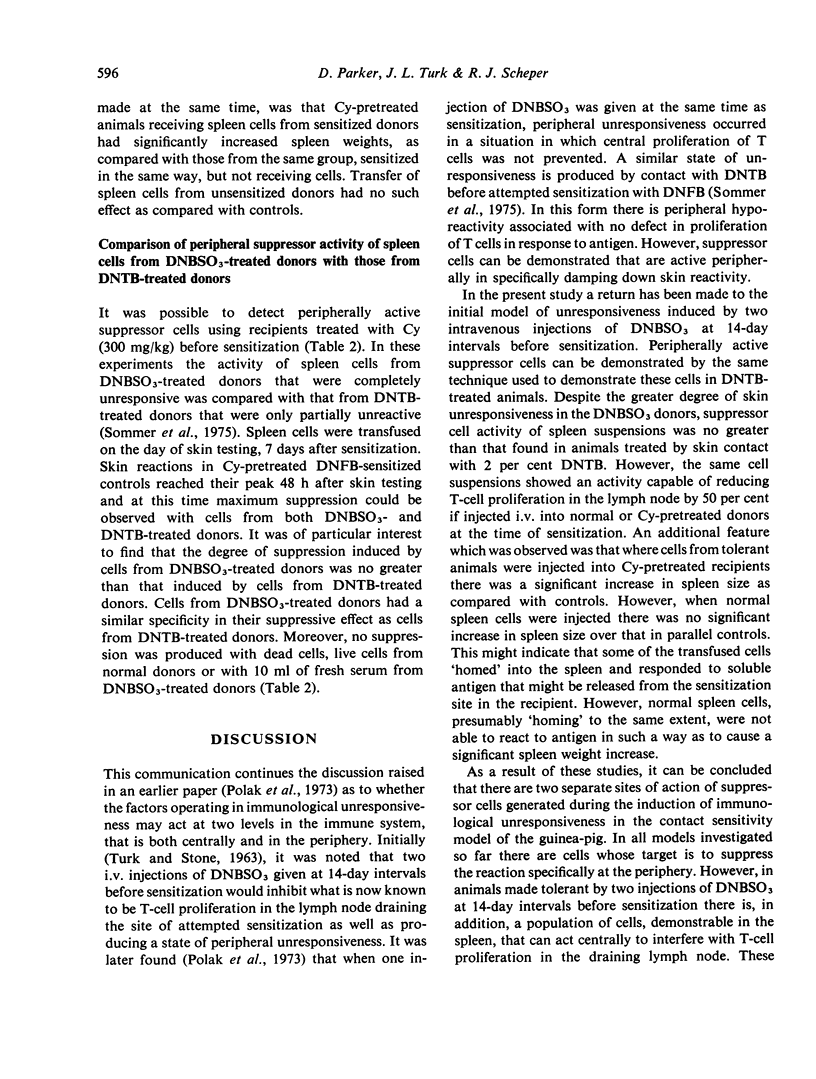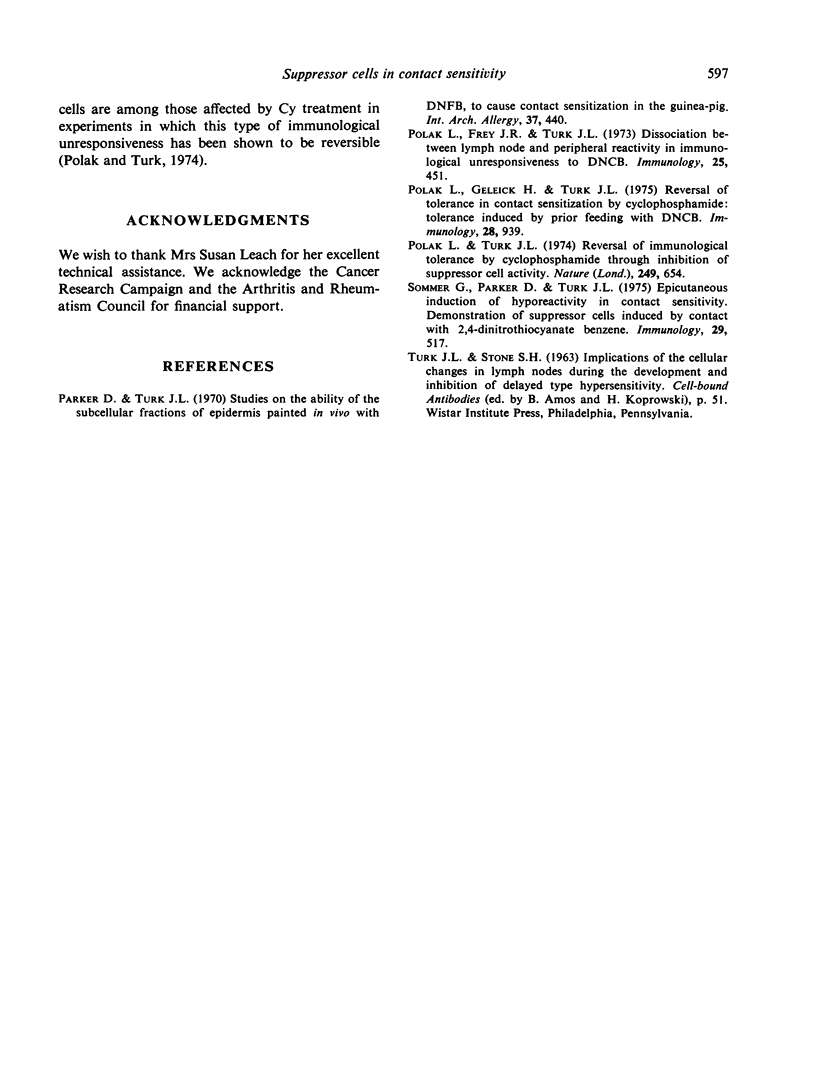Abstract
Suppressor cells were demonstrated in the spleen of guinea-pigs made specifically unresponsive to dinitrofluorobenzene (DNFB) with dinitrobenzene sulphonic acid (DNBSO3). Transfusion of these cells at the same time as sensitization with DNFB, produced a significant reduction in the immunoblasts proliferating in the draining lymph node 4 days later. Transfusion on the day of skin testing produced no greater suppression of skin reactivity than cells taken from animals made hypo-reactive to DNFB by contact with dinitrothiocyanate benzene (DNTB). It is concluded that there are at least two sites that suppressor cells can act. In the case of total unresponsiveness induced by DNBSO3, action is both central and in the periphery. In the case of hyporeactivity induced by DNTB, in which there is no defect in proliferation of T cells in response to antigen, the action of these cells is confined to the periphery. results of spleen weight studies suggest that suppressor cells homing in the spleen respond by proliferation to epicutaneously applied DNFB.
Full text
PDF




Selected References
These references are in PubMed. This may not be the complete list of references from this article.
- Parker D., Turk J. L. Studies on the ability of the subcellular fractions of epidermis, painted in vivo with DNFB, to cause contact sensitization in the guinea pig. Int Arch Allergy Appl Immunol. 1970;37(4):440–448. doi: 10.1159/000230806. [DOI] [PubMed] [Google Scholar]
- Polak L., Geleick H., Turk J. L. Reversal by cyclophosphamide of tolerance in contact sensitization. Tolerance induced by prior feeding with DNCB. Immunology. 1975 May;28(5):939–942. [PMC free article] [PubMed] [Google Scholar]
- Polak L., Turk J. L. Reversal of immunological tolerance by cyclophosphamide through inhibition of suppressor cell activity. Nature. 1974 Jun 14;249(458):654–656. doi: 10.1038/249654a0. [DOI] [PubMed] [Google Scholar]
- Sommer G., Parker D., Turk J. L. Epicutaneous induction of hyporeactivity in contact sensitization. Demonstration of suppressor cells induced by contact with 2,4-dinitrothiocyanatebenzene. Immunology. 1975 Sep;29(3):517–525. [PMC free article] [PubMed] [Google Scholar]


